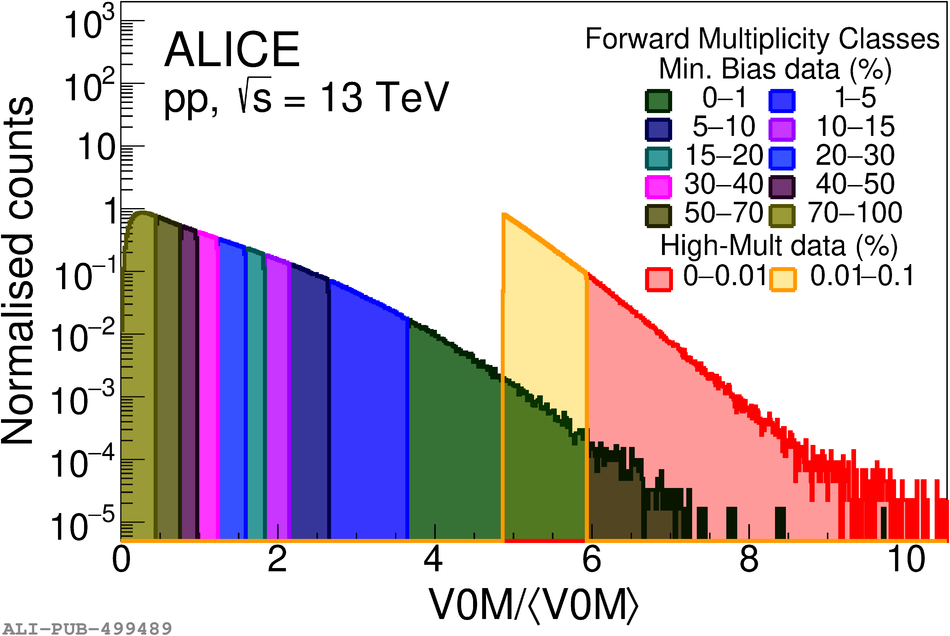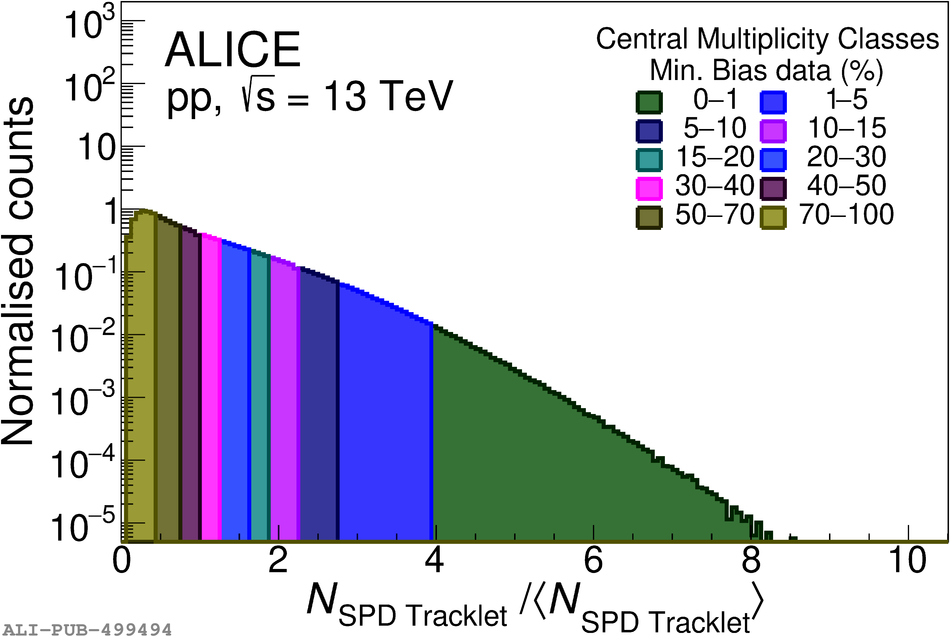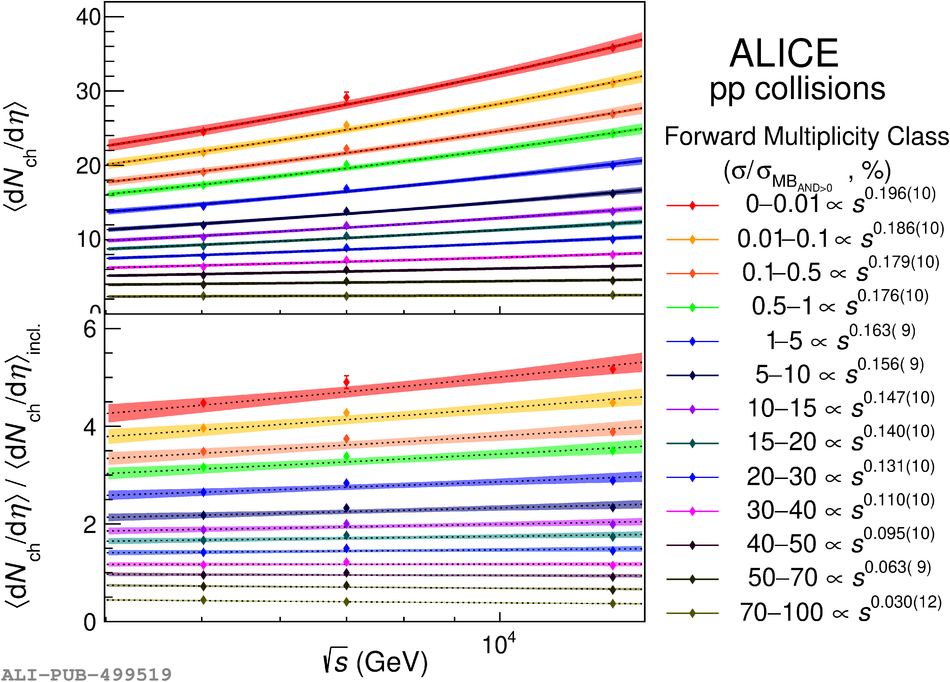The multiplicity dependence of the pseudorapidity density of charged particles in proton-proton (pp) collisions at centre-of-mass energies $\sqrt{s}$ = 5.02, 7 and 13 TeV measured by ALICE is reported. The analysis relies on track segments measured in the midrapidity range ($|\eta| <~ 1.5$). Results are presented for inelastic events having at least one charged particle produced in the pseudorapidity interval $|\eta|<~1$ ($\mathrm{INEL}_{>0}$). The multiplicity dependence of the pseudorapidy density of charged particles is measured with mid and forward rapidity multiplicity estimators, the latter being less affected by autocorrelations. A detailed comparison with predictions from the PYTHIA 8 and EPOS LHC event generators is also presented. Both generators provide a good description of the data.
Eur. Phys. J. C 81 (2021) 630
HEP Data
e-Print: arXiv:2009.09434 | PDF | inSPIRE
CERN-EP-2020-170







